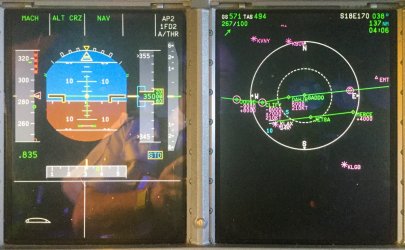jb747
Enthusiast
- Joined
- Mar 9, 2010
- Posts
- 13,503
Ask a question to start with. "Have you checked the STAR and approach in the FMC?". They should have, in which case virtually everything you could mention will have been covered. Make sure you're looking at the same approach and minima. Tell them how you're going to fly the approach and landing. Automatic or manual, or a mix. The most important items are the traps. LAX has a habit of hanging you up high and fast. How will you handle that. Go around, but only the unusual parts of it. For instance LAX and London the G/A may involve a continued descent at some stages of the approach.This was the reaction from a lot of the other crew. I never used to listen to the “expected” taxi route. It changed 99% of the time anyway.
Thankfully domestic is a lot better but you occasionally get the standard waffle that starts 100nm prior to top in CAVOK conditions.
ILS to 24L. The STAR is xyz. FMC's checked by everyone individually. Minima set. Low vis procedures, to a manual landing. Go around may be a descent to 2,000', in which case I will fly it using V/S and NAV modes. Autobrake set for exit at full length using BTV. Flap full, and full reverse thrust. Be aware of speed/height on base, the gear may be taken early. Ensure clearance before exiting runway. Brief done.























